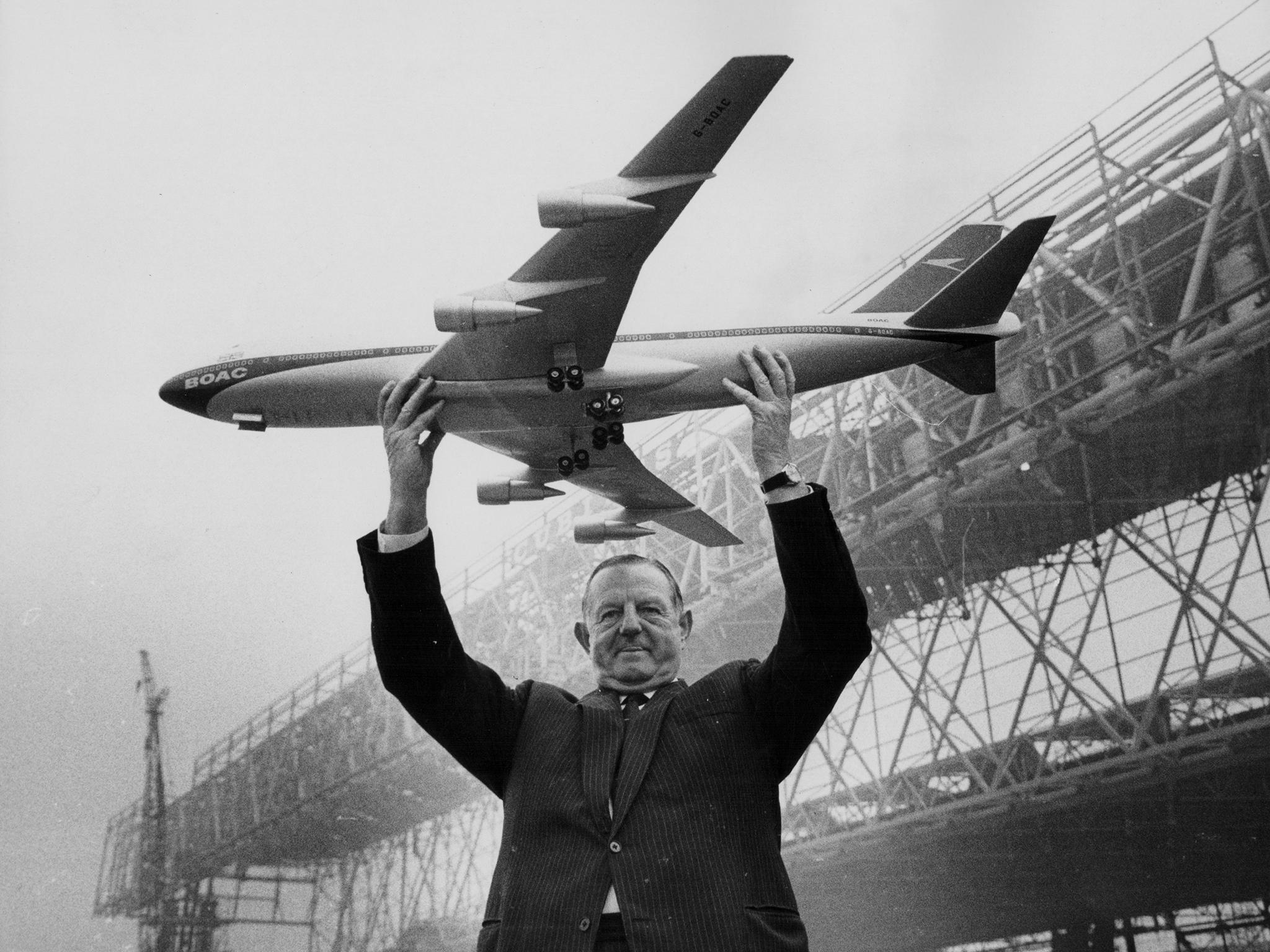The plane with a hump heads for the dump as Boeing announces it may end production of 747
The jumbo has been the backbone of British Airways’ long-haul fleet for 45 years

Support truly
independent journalism
Our mission is to deliver unbiased, fact-based reporting that holds power to account and exposes the truth.
Whether $5 or $50, every contribution counts.
Support us to deliver journalism without an agenda.

Louise Thomas
Editor
The end of the world-changing jumbo era is nigh. The plane that democratised air travel could soon be consigned to the aviation scrapheap. Boeing, which began building the 747 half a century ago, has quietly conceded that sales of the jumbo have slowed dramatically. In a brief statement to the Securities and Exchange Commission, the aircraft maker said: “It is reasonably possible that we could decide to end production of the 747.”
The double-decker plane revolutionised the world when it started flying in 1970, more than doubling the capacity in a single aircraft. As well as transforming the economics of air travel to allow far more people to travel, it also bestowed unprecedented levels of luxury for the fortunate few in the upstairs “bubble”.
Sir Richard Branson chose the name “upper class” for his business product because it initially comprised just eight seats in the cabin immediately behind the flight deck.
Nearly 50 years on, the 747 still meets the transportation needs of the US president. As recently as three years ago, it was giving lifts to a hitch-hiking Space Shuttle en route to its final resting place. And British Airways has an enduring love affair with the jet: the jumbo has been the backbone of British Airways’ long-haul fleet for 45 years, including three years as BOAC.
BA flies more 747s than any other airline in the world. It still has almost 40 in the fleet, and is refurbishing 18 of them for many more years of service. These are known as “super high-J” because of the vast Club World cabin with 86 seats. The capacity of the plane is just 275, around half the maximum number on an all-economy 747.

Every aircraft in the British Airways 747 fleet was delivered in the last century. Yet passengers, especially business travellers, seem to like them. And the sheer size helps BA extract plenty of value from its slots at Heathrow – the most constrained airport in the world.
With fuel prices low, the 747 looks a good bet, though when oil spiked a few years ago, most other carriers set about retiring their jumbo fleets. Virgin Atlantic will soon be devoid of the type of plane that launched Sir Richard Branson’s airline in 1984. And another old relic stands motionless at Arlanda airport in Stockholm, converted into a youth hostel for those who can afford a flatbed overnight on a 747 only if it is stationary.

The principal route for the flatbeds on BA’s freshly pimped jumbo sub-fleet is between Heathrow and New York's JFK, which has long been the flagship route for US and UK airlines. Heathrow was the destination of the maiden flight of the 747 on 22 January 1970, by Pan Am from JFK. It was three hours late.
The 747 quickly became the trophy aircraft target of choice for terrorists. Barely seven months after the launch, a Pan Am jumbo was hijacked to Cairo, where the jet was blown up just after the passengers and crew had evacuated the aircraft.
On 21 December 1988, Pan Am 103 was destroyed on the Heathrow-JFK route; 259 passengers and crew died when the jumbo was blown up by a terrorist bomb, while another 11 perished on the ground in Lockerbie.
With big aircraft, the scale of any incident is inevitably magnified. On 27 March 1977, the worst plane crash in history took place at Tenerife North airport between two 747s belonging to KLM and Pan Am: 538 passengers and crew died when a mix-up in fog led to a catastrophic collision.
The worst single aircraft accident in history also involved a 747, on a domestic flight in Japan. On 12 August 1985, 520 passengers and crew lost their lives when a badly repaired rear bulkhead failed and caused explosive decompression.
The reputation of the 747 remained strong, especially in comparison with its ill-starred rival, the Douglas DC-10. In 1989, the new long-range 747-400 flew a demonstration flight non-stop from London to Sydney – a distance of around 11,000 miles. “They were flying on fumes by the end,” recalls one long-serving member of Qantas cabin crew.
All BA’s 747s are this type, but a more modern 747-8 has been delivered to Lufthansa of Germany – and freight versions are still being made. With orders thin on the ground, the production line may soon close. Yet the plane will go on for many more years, competing against the most modern aircraft that Airbus can offer. And it fights its corner commercially, which is a remarkable achievement for arguably the most iconic creation of the late 20th century.
Subscribe to Independent Premium to bookmark this article
Want to bookmark your favourite articles and stories to read or reference later? Start your Independent Premium subscription today.
Join our commenting forum
Join thought-provoking conversations, follow other Independent readers and see their replies
Comments